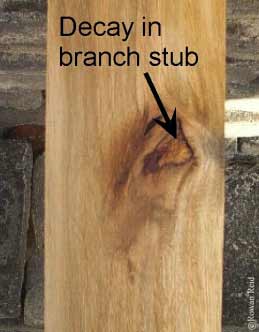|
|
|
When to prune: season and frequency
of pruning

The risk of infection and the cambium’s
dormancy are the most critical factors influencing the choice
of season for pruning. Late winter pruning of eucalypts is
generally recommended in temperate areas. This reduces the
risk of bark tearing or popping because the cambium is still
dormant, while rapid tree growth in spring reduces the risk
of severe decay. Dormant season pruning is also recommended
for softwoods because there is less resin flow. This means
fewer defects develop over the branch stub. The lack of foliage
makes it easier to prune deciduous trees in winter. But poplars
are often pruned in late summer, while the foliage is still
green, to provide stock fodder. Summer pruning might also
reduce the risk of epicormic shoots developing on the stem
of deciduous hardwoods.
Fast-growing trees need to be pruned more often to control
the size of the knotty core. Because smaller branches heal
faster, and are less likely to exhibit decay, annual pruning
is preferred where practical. Despite the greater number of
prunings, annual pruning may be more cost effective because
small branches are easier to prune.
Back to top
|
